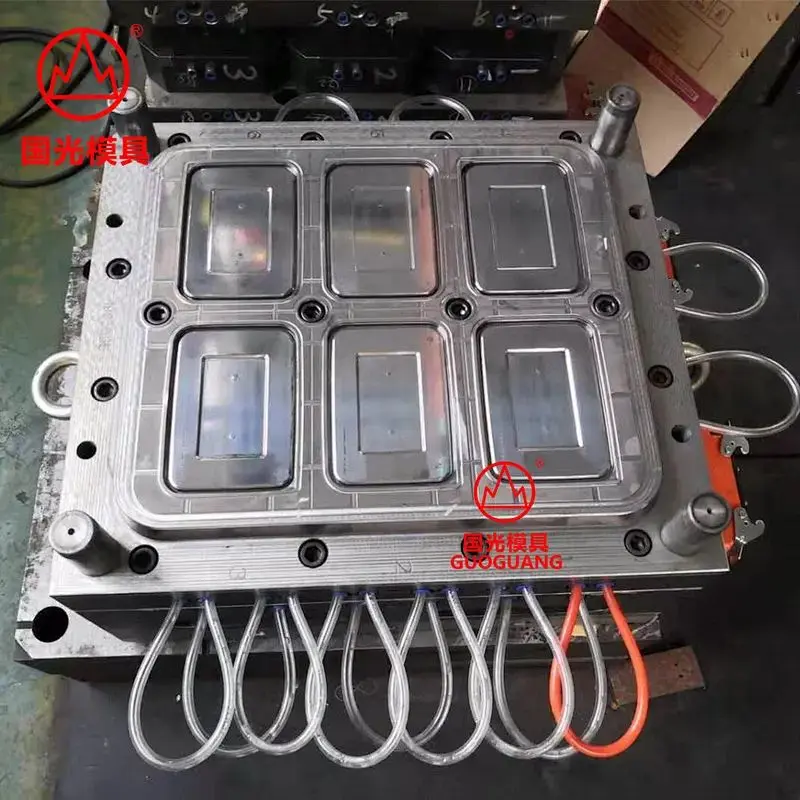
When molding thin-walled products, a specially designed mold for thin-walled products is generally required. Compared with standardized molds for conventional products, molds for thin-walled products have undergone major changes in mold structure, pouring system, cooling system, exhaust system and demoulding system. Mainly manifested in the following aspects:
(1) Mold structure: In order to withstand the high pressure during molding, thin-walled molding molds must have greater stiffness and strength. Therefore, the moving and fixed templates of the mold and their supporting plates are heavier and generally thicker than the templates of traditional molds. There should be more support columns, and there may be more internal locks in the mold to ensure precise positioning and good side support to prevent bending and deflection. In addition, high-speed injection speed increases the wear of the mold, so the mold must use higher hardness tool steel, and the hardness of high-wear and high-erosion areas (such as the gate) should be greater than HRC55.
(2) Gating system: When molding thin-walled products, especially when the thickness of the product is very small, a large gate should be used, and the gate should be larger than the wall thickness. If it is a direct gate, a cold slug well should be installed to reduce gate stress, assist in filling, and reduce damage to the product when the gate is removed. To ensure sufficient pressure to fill the thin mold cavity, the pressure drop in the runner system should be minimized. For this reason, the flow channel design is larger than the traditional one, and the residence time of the melt must be limited to prevent resin degradation. When a mold has multiple cavities, the balance requirements of the gating system are much higher than those of conventional molds. It is worth noting that two advanced technologies have been introduced into the gating system of thin-walled product molds, namely hot runner technology and sequential valve gate (SVG) technology.
(3) Cooling system: Thin-walled products cannot withstand large residual stress caused by uneven heat transfer like traditional thick-walled parts. In order to ensure the dimensional stability of the product and control shrinkage and warpage within an acceptable range, it is necessary to strengthen the cooling of the mold and ensure balanced cooling. Better cooling measures include using unclosed cooling lines in the core and cavity modules, increasing the cooling length, which can enhance the cooling effect, and adding high-conductivity metal inserts where necessary to speed up heat conduction.
(4) Exhaust system: Thin-wall injection molding molds generally need to have good exhaust properties, and it is best to carry out vacuum operations.
. Due to the short filling time and high injection speed, it is very important to fully exhaust the mold, especially in the flow front gathering area, to prevent trapped gas from igniting. Gas is usually discharged through the core, ejector rod, stiffeners, studs and parting surfaces. The end of the flow channel must also be fully vented. Japan’s Sumitomo Company uses porous tool steel to make small inserts to solve the exhaust problem of small products.
(5) Demoulding system: Because the walls and ribs of thin-walled products are very thin, they are very easy to damage, and the shrinkage along the thickness direction is very small, making it easy to bond the reinforcing ribs and other small structures. At the same time, the high holding pressure makes the shrinkage more rapid. Small. To avoid ejector pins and mold sticking, thin-wall injection molding should use more and larger ejector pins than conventional injection molding.
Post time: Jan-23-2024





